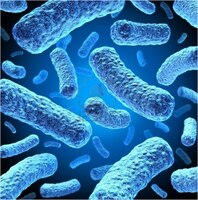71403 Sigma-AldrichRosetta™ 2(DE3)pLysS Competent Cells - Novagen
Novagen's Rosetta™ 2 (pLysS) host strains are BL21 derivatives designed to enhance the expression of eukaryotic proteins that contain codons rarely used in E. coli along with T7 lysozyme activity.
More>> Novagen's Rosetta™ 2 (pLysS) host strains are BL21 derivatives designed to enhance the expression of eukaryotic proteins that contain codons rarely used in E. coli along with T7 lysozyme activity. Less<<Recommended Products
Overview
| Replacement Information |
|---|
Pricing & Availability
| Catalog Number | Availability | Packaging | Qty/Pack | Price | Quantity | |
|---|---|---|---|---|---|---|
| 71403-3 |
|
Glass bottle | 0.4 ml |
|
— | |
| 71403-4 |
|
Glass bottle | 1 ml |
|
— |
| Description | |
|---|---|
| Overview | A common method for transformation of DNA plasmids into E. coli is the use of chemically competent cells. Although competent cells can be prepared in the laboratory, greater efficiency, reproducibility, and convenience are achieved using Novagen prepared competent cells. Novagen competent cells represent the widest selection available for protein expression. Every Novagen competent cell strain is verified for phenotype and purity, and is guaranteed for
transformation efficiency. T7 expression strains are lysogens of bacteriophage DE3, as indicated by the (DE3). These hosts carry a chromosomal copy of the T7 RNA polymerase gene under control of the lacUV5 promoter. Such strains are suitable for production of protein from target genes cloned in appropriate T7 expression vectors, using IPTG as an inducer. Rosetta™ 2 host strains are BL21 derivatives designed to enhance the expression of eukaryotic proteins that contain codons rarely used in E. coli. These strains supply tRNAs for 7 rare codones (AGA, AGG, AUA, CUA, GGA, CCC, and CGG) on a compatible chloramphenicol-resistant plasmid. The tRNA genes are driven by their native promoters. DE3 indicates that the host is a lysogen of λDE3, and therefore carries a chromosomal copy of the T7 RNA polymerase gene under control of the lacUV5 promoter. Such strains are suitable for production of protein from target genes cloned in pET vectors by induction with IPTG. pLysS strains express T7 lysozyme, which further suppresses basal expression of T7 RNA polymerase prior to induction, thus stabilizing pET recombinants encoding target proteins that affect cell growth and viability. |
| Genotype: F- ompT hsdSB(rB- mB-) gal dcm (DE3) pLysSRARE2 (CamR)
This product contains genetically modified organisms (GMO). Within the EU GMOs are regulated by Directives 2001/18/EC and 2009/41/EC of the European Parliament and of the Council and their national implementation in the member States respectively. This legislation obliges MilliporeSigma to request certain information about you and the establishment where the GMOs are being handled. Click here for Enduser Declaration (EUD) Form. This product is sold for internal research use only. Any commercial use of this product, its components, and/or any derivatives thereof (including but not limited to proteins produced using the product or its components) (together and hereinafter the 'EMD Product') requires signature of a written commercial use agreement with EMD Millipore Corporation or its successor-in-interest. Commercial use shall include but not be limited to: (1) use of the EMD Product to manufacture products for sale to third parties; (2) use of the EMD Product to provide services, information, or data to third parties in exchange for consideration; (3) use of the EMD Product for therapeutic, diagnostic or prophylactic purposes (including as part of a device, chip, assay or other product); or (4) resale of the EMD Product, whether or not such EMD Product is resold for research use. Nothing contained herein shall be deemed to represent or warrant that additional third party rights are not required for use of the EMD Product. Please direct any questions on these use restrictions to: licensing@milliporesigma.com. |
|
| Catalogue Number | 71403 |
| Brand Family | Novagen® |
| References |
|---|
| Product Information | ||
|---|---|---|
| • | 2 × 200 µl or 5 × 200 µl | Rosetta 2(DE3)pLysS Competent Cells |
| • | 2 × 2 ml or 4 × 2 ml | SOC Medium |
| • | 10 µl | Test Plasmid |
| Guaranteed efficiency | > 2 × 10⁶ cfu/mg | |
| Quality Level | MQ100 | |
| Applications |
|---|
| Biological Information |
|---|
| Physicochemical Information |
|---|
| Dimensions |
|---|
| Materials Information |
|---|
| Toxicological Information |
|---|
| Safety Information according to GHS |
|---|
| Safety Information |
|---|
| Product Usage Statements |
|---|
| Storage and Shipping Information | |
|---|---|
| Ship Code | Dry Ice Only |
| Toxicity | Multiple Toxicity Values, refer to MSDS |
| Storage | ≤ -70°C |
| Do not freeze | Ok to freeze |
| Packaging Information |
|---|
| Transport Information |
|---|
| Supplemental Information |
|---|
| Specifications |
|---|
| Global Trade Item Number | |
|---|---|
| Catalog Number | GTIN |
| 71403-3 | 04055977270020 |
| 71403-4 | 04055977270037 |
Documentation
Rosetta™ 2(DE3)pLysS Competent Cells - Novagen SDS
| Title |
|---|
Rosetta™ 2(DE3)pLysS Competent Cells - Novagen Certificates of Analysis
| Title | Lot Number |
|---|---|
| 71403 |
Citations
| Title | |
|---|---|
|
|
User Protocols
| Title |
|---|
| TB009 Competent Cells |
| TB053 Academic and Non-profit Laboratory Assurance Letter |







